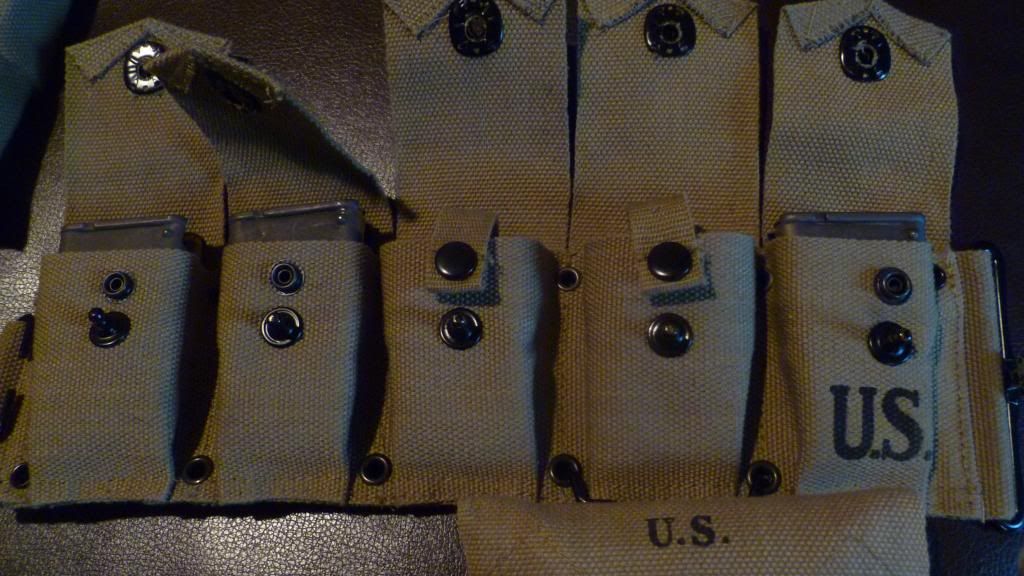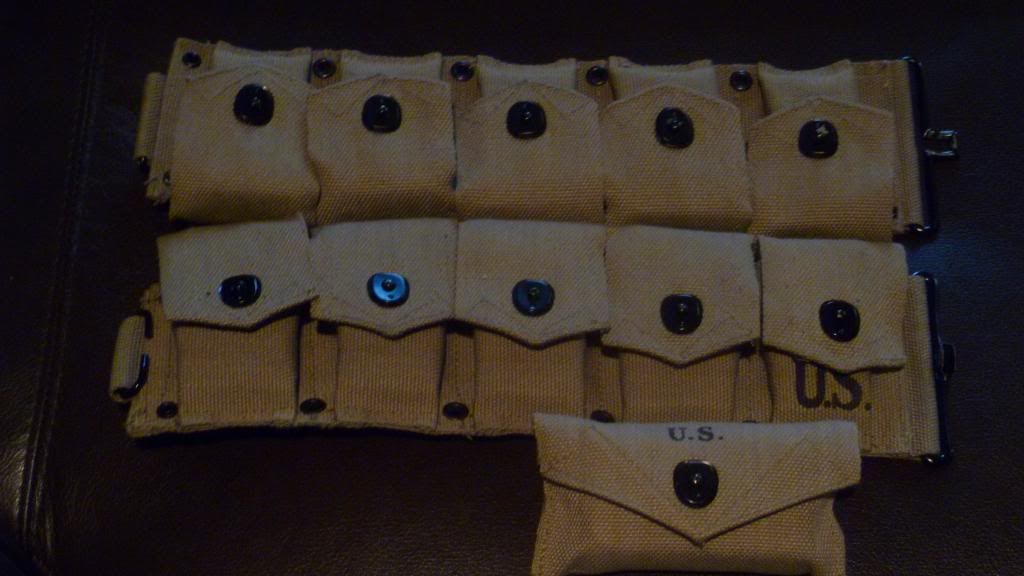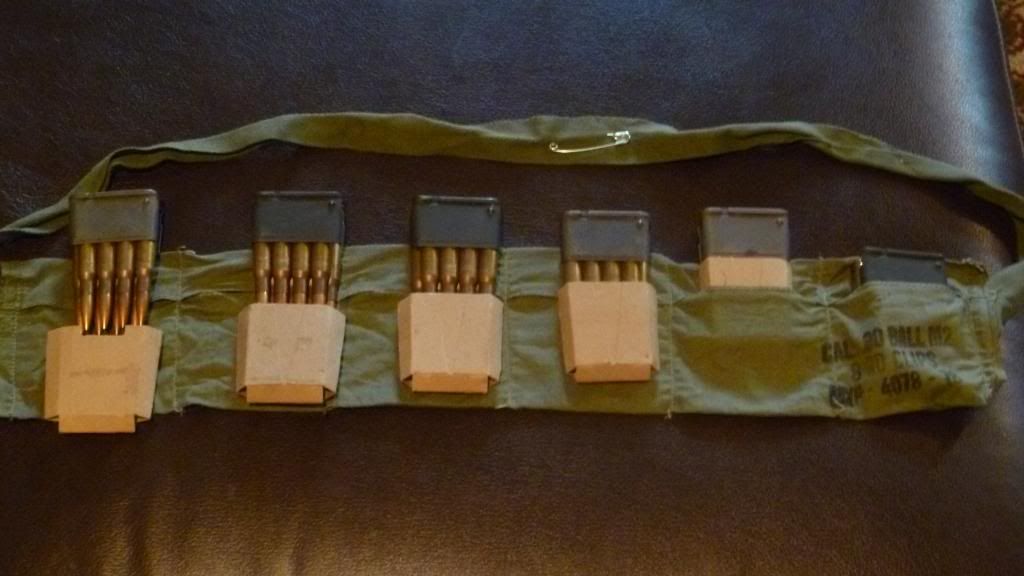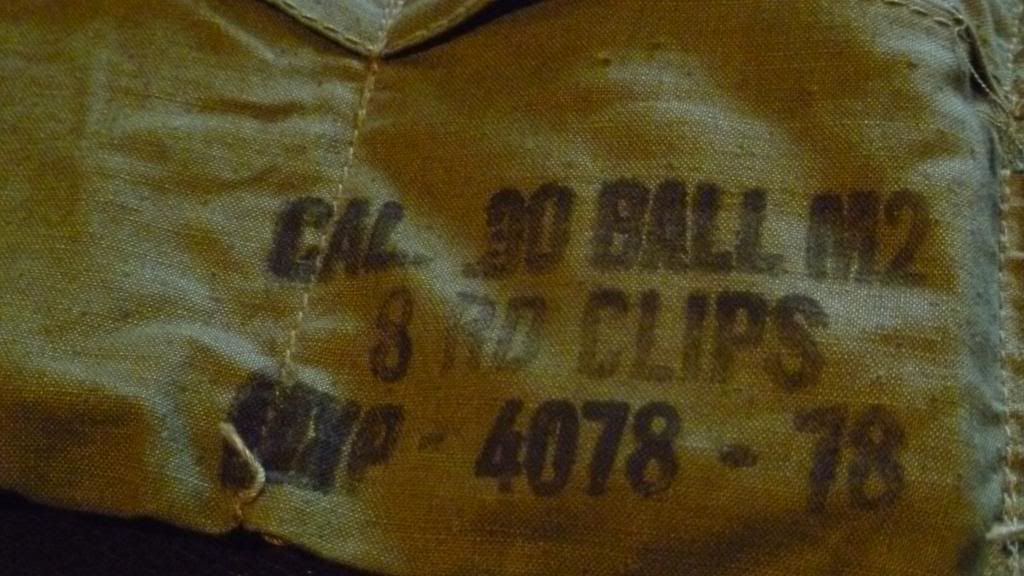After exploring all available storage options for the M1 en-bloc clips, I was confronted with a dilemma. Just how much firepower did I want to carry around at the range? With "cheap" 30-06 coming to 55 cents a round (from the folks at the CMP), the odds of finishing a whole bandolier of clips in one informal session is an expensive prospect. However, the appeal of the full "GI loadout" cannot be denied, especially with Sturm/Miltec offering a product at a reasonable $35. While not a replacement for the real issue, it's a nice item to complement the rifle in the field. Unlike later issued M-1923 belts, this one comes complete with the Springfield 1903 retainer straps.
 |
| Includes 1903 Springfield straps (to separate 2 stripper clips per pocket). |
When fully loaded with enblocs, the price point of the Sturm belt begins to make more sense. Unfortunately, I have to practically squeeze the rounds into the pocket right above the "US" stamp. Seems that someone was a bit overzealous with the rivet gun.
 |
| Eyelet placed too close to cartridge pocket. |
Update: I've already lost an eyelet from simply fastening the Sturm belt to it's companion M-1928 Haversack. The belt remains functional, but it is clear that these pieces are not built to last. As always, your mileage may vary.
 |
| Lost eyelet visible second from left- partially strengthened/repaired with superglue. Hey, it's a reproduction. |



